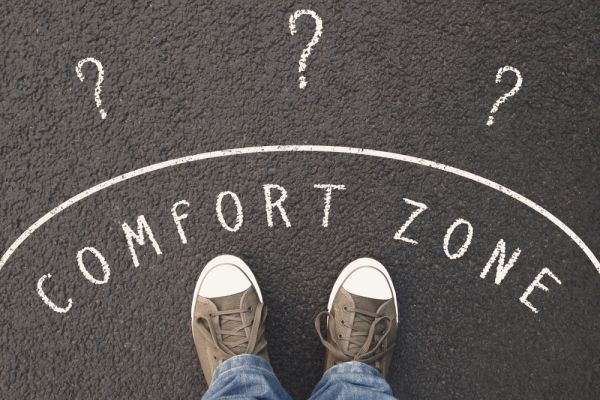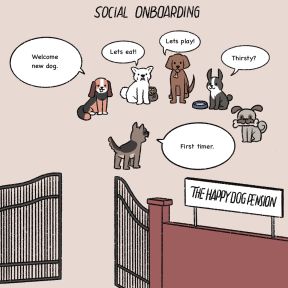What Are Panic Attacks?
Panic attacks are dramatically abrupt bursts of acute anxiety that feel life-threatening but are not. They build into a crescendo of fear within minutes, but what they lack in duration they make up in distress. The body sensations of anxiety become extremely intense—pounding heart, racing pulse, the feeling of difficulty getting enough air—making it feel as if you are about to die. That interpretation is mistaken, but it nevertheless triggers even more anxiety, intensifying the panic.
Panic attacks can occur out of the blue, even during sleep, and the feeling of loss of control magnifies the terror. One attack is disturbing enough, but it often generates worry about having another, which can lead people to change their everyday behavior, avoiding any place that could make them feel “unsafe” or difficult to escape from, and seriously restricting their range of activity. It’s not clear what triggers panic attacks or exactly how nerve signals get miscommunicated and misinterpreted. As dire and overwhelming as such attacks feel, they nevertheless can be controlled—even while they’re happening.
On This Page
- Why do I feel like I'm about to die?
- What are the symptoms of a panic attack?
- What's happening in a panic attack?
- Why do panic attacks happen?
- When are panic attacks most likely to occur?
- What triggers a panic attack?
- What's the difference between a panic attack and panic disorder?
- Is there a way to stop a panic attack when it's happening?
- Run from a panic attack—or do something else?
- Are there effective techniques for managing panic attacks?
- Is there a cure for panic attacks or panic disorder?
Anxiety involves much of the same brain circuitry as fear, and one of the functions of fear is to guarantee that you take defensive action. The stress-response system is activated, preparing your body to fight or flee. This reaction happens before you even have a chance to think about it. Never mind that it’s a false alarm; as panic jump-starts the body response, it is especially sudden and intense. The heart, which plays a critical role in the defensive preparations, revs up to get oxygen to the muscles as quickly as possible, to prepare them for fight or flight. You feel a pounding sensation in your chest. Breathing speeds up, to bring more oxygen into the lungs. Metabolism goes into high gear. You may sweat or feel shaky. People differ in the degree to which they are aware of their inner workings of their body (interoception), and there’s some evidence that those who are subject to panic attacks are highly attuned to body sensations. Nevertheless, the pounding heart, rapid heartbeat, gasping for air, and shakiness are similar to what can happen in a heart attack, and that is how he body sensations are interpreted. It is one of panic’s tracks.
Panic attacks often begin with a sudden sense of extreme danger, quickly followed by an intensely distressing rush of physical sensations. Responding to hormonal signals from a jump-started stress-response system, the body suddenly prepares to fight or flee. The heart speeds up and works hard in an effort to quickly get blood to muscles. You feel your heart racing and pounding in your chest, not to mention shortness of breath trying to keep up with the demand for oxygen. You may feel sweaty and experience trembling as well. People in the grip of a panic attack feel detached from themselves and from the world around them, and typically feel dizzy and nauseous. Panic attacks make you feel like you’re dying or going crazy, because there is no obvious danger around.
A panic attack is the sudden response to the feeling of imminent danger. And the body brings all its forces to bear to protect you from what your system has (erroneously) signaled is a dire threat. The body response, sudden and exaggerated—pounding heart, rapid breathing, shakiness—is itself interpreted as a threat, and the entire experience is compounded by a perception of no escape. But panic attacks are false alarms, and no threat—from within or without— actually exists.
In the grand scheme of things, panic attacks happen because the brain is built to err on the side of danger—to perceive trouble even where it doesn’t exist—as a kind of insurance policy on your life. But panic attacks are complex, involving many systems of the brain and the body, and scientists devote considerable attention to figuring out why panic attacks occur. All that can be said for sure is that something goes wrong in brain circuits of normal cross-talk between the emotional output center of the amygdala and the cognitive processing and regulation center of the prefrontal cortex. Overwhelmed, the prefrontal cortex does not realize that the threat is not real. The stress response system, which jumps in as if the perceived danger were real, creating so many of the unpleasant physical sensations, can magnify the problem by having an unusually low threshold for response, often a result early adverse experience.
There is no timetable for panic attack. They can arise any time, and they’re even known to awaken people from sleep. Studies show that up to one quarter of the population experience an isolated panic attack at some point in life. However, their very unpredictability gives them great power to shape subsequent behavior; attacks are so distressing that people sometimes restrict their activity to avoid the possibility of having another attack. When fear of further panic attacks drives behavior, panic disorder is said to exist. It is often accompanied by agoraphobia, a fear of enclosed spaces or crowded open spaces from which there may seem to be no escape—or a fear of traveling by oneself or leaving home altogether. The median age of onset of panic attacks is 24. Women are twice as likely as men to have panic attacks. They are common in many other mental health disorders besides anxiety. Panic attacks are rare in people over 60.
It is not clear what triggers a panic attack, which is the sudden response to a feeling of imminent danger. But it is known that stressful experience early in life contributes to susceptibility to panic attacks. Scientists know that adverse experiences in childhood can reset the sensitivity of many nodes in brain circuits that contribute to emotional reactivity, to emotion regulation, and to the stress response. Much research has focused on the conjunction of a malfunction in brain circuitry of emotion with one or another physiological trigger—a metabolic or inflammatory signal gone awry or heightened sensitivity to physiologic functions. Nevertheless, panic disorder responds to treatment with behavioral therapy. In addition, during a panic attack, making an immediate attempt to lengthen the duration of exhalation may activate the parasympathetic nervous system and set in motion a calming reflex.
A panic attack is a singular, unexpected bout of intense anxiety with such sudden, forceful activation of body systems—including the heart—that a person typically feels as if she is about to die. The sense of danger is compounded by the sense of threat from within. There is often a sense of no escape. Panic attacks are extremely unpleasant and distressing. As a result, they can, and often do, give rise to the fear of having another such attack. Panic disorder exists when people who are subject to panic attacks change their behavior to avoid the possibility of having another. In about 30 percent of cases, people drastically curtail their lives, taking great pains to avoid crowded or enclosed spaces or busy public places—concerts, elevators, airplane travel. That development is known as agoraphobia.
The natural response to panic attacks is to fight them or to escape from them. But that may only prolong them. Experts find that he better way is to lean into the fear, counterintuitive as it may feel at first. No matter how real and overwhelming it feels, the alarm your body has received about danger is false. That is the essence of a panic attack. The natural response is to want to flee—or to fight the feeling of panic. But experts who work with those who have panic attacks recognize that such behavior only prolongs the storm, and that there are actually ways to restore a sense of control in the middle of it. Perhaps the first is to understand that the terrifying physical sensations are set in motion automatically, the body’s reaction to a mistaken message of threat.
Although panic attacks give rise to the instinct to run, the more helpful response is to approach the fear— with a sense of curiosity about the unfolding situation. One of the most basic ways is to become an objective observer of your own awful experience. That keeps you anchored to the here and now.
If you need some grounding first, try touching the objects around you, naming them or describing them. Then observe and describe what is happening to you in the anxiety attack. I feel like the walls are closing in. Sweat is pouring down my back. Then try and observe what you’re feeling. You don’t have to give in to the feeling—just describe it. I feel very afraid. Becoming the observer of your own experience may not make the anxiety go away, but it will give you the knowledge that you are not dying and that you can get through the experience. The goal is not to reduce fear but to release yourself from the physical grip it has on you and the inclination to shrink your life to fit it.
Panic attacks are so distressing that they generate the impulse to run from the fear. That feels right. But experts—some having faced their own bouts of anxiety—contend that only magnifies the problem. It never allows you to habituate to the fear and realize not only that it is a false alarm but that you can actually cope with it—and mitigate it. Better to lean into the fear and ride it out, by exploring it—that is, to react to it with curiosity. The goal is not to lessen the anxiety—although that may happen—but to become an observer of your own experience and try to describe it. What thoughts are you having? What body sensations? Name them. What is your fear urging you to do?
That is a rational approach. It is also possible to bypass rationality and approach the overactivation directly, by turning on the parasympathetic nervous system. The sympathetic nervous system jump-starts the stress response. The parasympathetic nerves put the brakes on that response. Increasing the length of exhalations—even in the middle of a panic attack—can activate the parasympathetic nerve, slow down your heart rate, and ease body tension. To counter the sense of being out of control that adds to the panic, it also helps to anchor yourself in the tangible world—by touching the surfaces around you—a wall, a chair.
At present, there is no cure for panic attacks. That doesn’t mean you can’t loosen their grip. The crescendo of fear that typifies a panic attack results in part from a misreading of the body sensations as they are occurring. Having a general understanding beforehand that panic attacks are false alarms can diminish the fear; panic attacks are false alarms trying to trick you into believing that real danger is present when it is not.
On a longer time frame, psychotherapy, and specifically cognitive and behavioral therapy, has proved effective for both panic attacks in particular and anxiety in general. It is considered the first-line treatment for panic attacks and panic disorder. CBT addresses the physical symptoms, the inaccurate thinking that occurs during panic attacks, and the avoidance behavior that the (false) alarm is (erroneously) urging.
There are no medications that specifically target panic attacks, although several types of medications are often prescribed, including benzodiazepine sedatives (such as Xanax), selective serotonin reuptake inhibitor (SSRI) antidepressants (such as Prozac), and serotonin and norepinephrine reuptake inhibitor (SNRI) antidepressants (such as Effexor). The use of drugs to treat panic attacks is controversial; some experts point out that medication is the equivalent of avoidance—acting on the false alarm urging escape—when resolving anxiety requires mastering skills to approach, sit through, or defang the fear.














